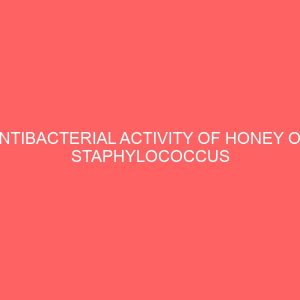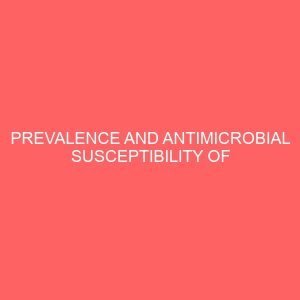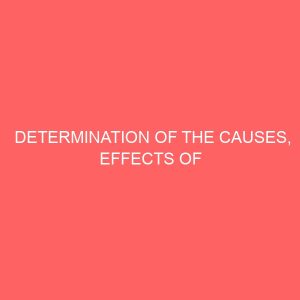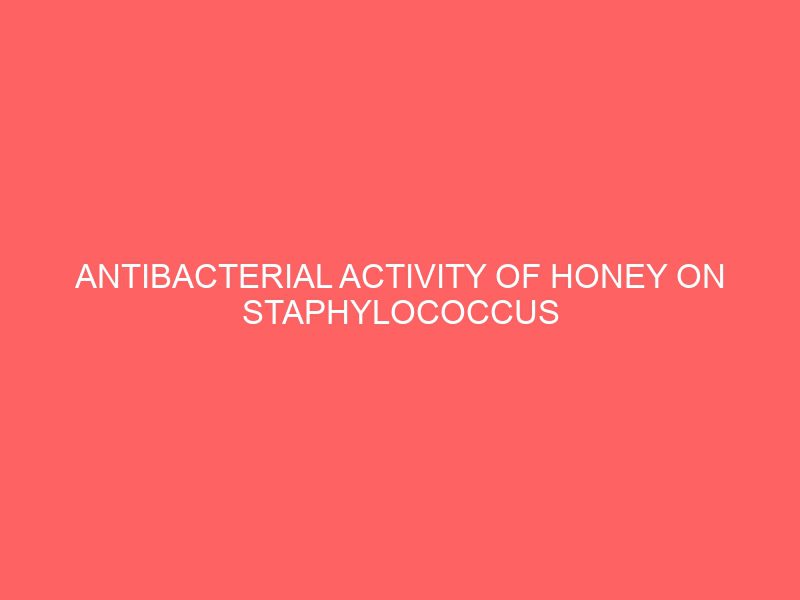Description
ABSTRACT
Antibacterial activity of honey obtained from two different locations in Enugu State Nsukka amp; Ugwuaji Nigeria on Staphylococcus aureus, Escherichia coli and Streptococcus pyogens isolated from wound was studied. Agar well diffusion method was used to determine the antibacterial activity of the honey on the test microorganisms. The result revealed that the two honey samples have heavy antibacterial activities against the test organisms and zones of inhibition were obtained showing high antibacterial activity. The antibacterial activity increased with increase in the concentrations and honey from Nsukka produced a high antibacterial activity clearer zone on staphylococcus aureus and Escherichia coli at all concentration and moderately for streptococcus pyogens. The use of honey as a therapeutic substance has been rediscovered by the medical profession on more recent times, and it is gaining acceptance as an antibacterial agent for the treatment of ulcers and bed sores, and other infections resulting from burns and wounds.
CHAPTER ONE
1.0 Introduction
Infections and other health related problems have been of great concern to human beings and chemotherapy is the main approach in the treatment of such conditions. Investigation into the microbial flora of wound began in the late 19th century and since then; improvements in techniques have facilitated the recovery, identification and enumeration of a wide variety of microbial species. Most wounds support relatively stable polymicrobial communities Bowkler, et.al; 2001 often without signs of clinical infection Hansson,et al; 1993.
However, potential pathogens may be present and the delicate balance between colonized wound and an infected wound depends on the interplay of complex host and microbial influences Emmerson, 1998. The development of wound infection has deleterious effect on patients by causing increased pain, discomfort, inconveniences and can lead to life threatening conditions or even death.
Major challenges encountered with antibiotics in clinical use are resistance to antibiotics which leads eventually to failure of the treatment Blair 2004. Infectious diseases are known to be treated with herbal remedies throughout the history of mankind; even today, natural substances continue to play a major role in primary health care as therapeutic remedies in many developing countries Jonathan, et.al; 2007. Over the years, there have been reports of the production of more potent antibiotics e.g. third and fourth generation of cephalosporin by pharmaceutical companies which are not readily available and expensive. Problems of various antibiotics include low efficacy, side effect which has lead investigations into natural and potent antibacterial seeming to be the right step to take. The invasion of pathogenic organism is on the rise as a result, effects are been made to develop antibacterial agent from natural sources for better therapeutic effect Gills, 1992. The therapies have drawn the interest of both public and medicinal communities. Current research has been focused on herbal and aromatherapy product. However, a number of their product such as honey has shown therapeutic promise.
1.1 Aims and objectives.
1. To determine antibacterial potential of honey.
2. To investigate the mechanism of antibacterial action of honey.
3. To determine the minimum inhibitory concentration of honey on bacterial isolates from wounds of human beings.
4. To yield additional knowledge such as the possible dilution of honey sample and activity of the honey sample in bacterial infection.








Reviews
There are no reviews yet.